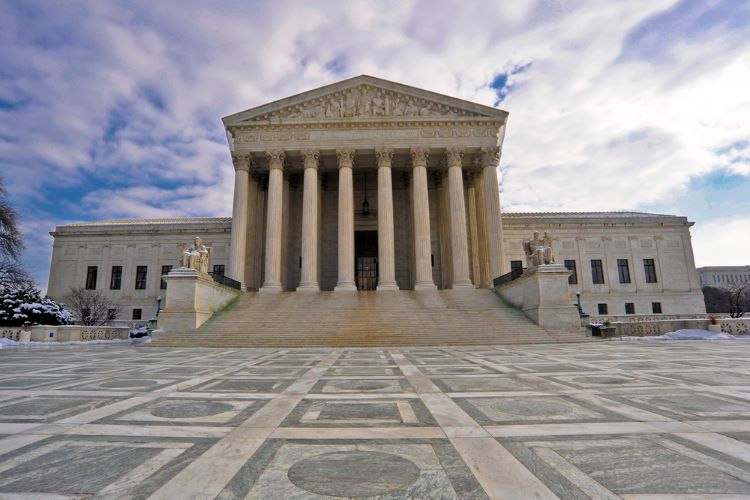Supreme Court leaves prisoner without recourse on his statutory innocence claim

The Supreme Court ruled last week that a federal prisoner can’t file a second petition to vacate their conviction, even if a later Supreme Court decision held that their type of conduct was legal. Image from Shutterstock.
A U.S. Supreme Court decision Thursday leaves some defendants without recourse to assert that they are actually innocent of a crime because of a change in statutory interpretation.
The high court ruled that a federal prisoner can’t file a second petition to vacate their conviction, even if a later Supreme Court decision held that their type of conduct was legal.
The Supreme Court ruled June 22 against Marcus DeAngelo Jones in a 6-3 decision. Justice Clarence Thomas wrote the majority opinion. Justices Sonia Sotomayor, Elena Kagan and Ketanji Brown Jackson dissented.
SCOTUSblog has coverage, while the American Civil Liberties Union and Fair and Just Prosecution issued press releases criticizing the decision.
“This denial of a day in court for individuals imprisoned for conduct that is not a crime is a major blow to fairness and justice nationwide,” the ACLU said in its press release.
Jones was convicted for unlawful possession of a firearm by a felon in 2000 and sentenced to 27 years in prison. In 2019, the Supreme Court ruled in Rehaif v. United States that a defendant can’t be convicted of that crime unless they were aware that they were in a category of persons barred from possessing a gun under the law.
There was no evidence presented at Jones’ trial that he was aware of his status as a felon. He had testified that he thought that his record was expunged, according to the press release by Fair and Justice Prosecution.
Jones sought to assert his innocence through a motion to vacate his conviction under Section 2255 of Title 28 of the U.S. Code. But the Supreme Court ruled that Jones was out of luck because he previously challenged his conviction, and the Antiterrorism and Effective Death Penalty Act generally bars second or successive Section 2255 motions.
Successive motions can only be filed if they rely on “newly discovered evidence” or “a new rule of constitutional law.” Jones’ new Section 2255 motion didn’t qualify because it relied on a more favorable interpretation of statutory law, Thomas wrote.
Thomas also said Jones could not assert his claim under Section 2255’s savings clause, which allows a prisoner to seek habeas relief if a Section 2255 motion “is inadequate or ineffective to test the legality of his detention.”
The savings clause doesn’t authorize an “end-run around” the Antiterrorism and Effective Death Penalty Act, Thomas said.
In her dissent, Jackson summarized the majority’s decision this way: “Today, the court holds that an incarcerated individual who has already filed one postconviction petition cannot file another one to assert a previously unavailable claim of statutory innocence.”
“Forever slamming the courtroom doors to a possibly innocent person” raises “serious constitutional concerns,” Jackson said.
A separate dissent by Sotomayor and Kegan said the majority decision “yields disturbing results.”



